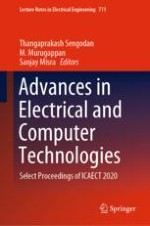This book comprises select proceedings of the International Conference on Advances in Electrical and Computer Technologies 2020 (ICAECT 2020). The papers presented in this book are peer-reviewed and cover latest research in electrical, electronics, communication and computer engineering. Topics covered include smart grids, soft computing techniques in power systems, smart energy management systems, power electronics, feedback control systems, biomedical engineering, geo informative systems, grid computing, data mining, image and signal processing, video processing, computer vision, pattern recognition, cloud computing, pervasive computing, intelligent systems, artificial intelligence, neural network and fuzzy logic, broad band communication, mobile and optical communication, network security, VLSI, embedded systems, optical networks and wireless communication. The volume can be useful for students and researchers working in the different overlapping areas of electrical, electronics and communication engineering.
